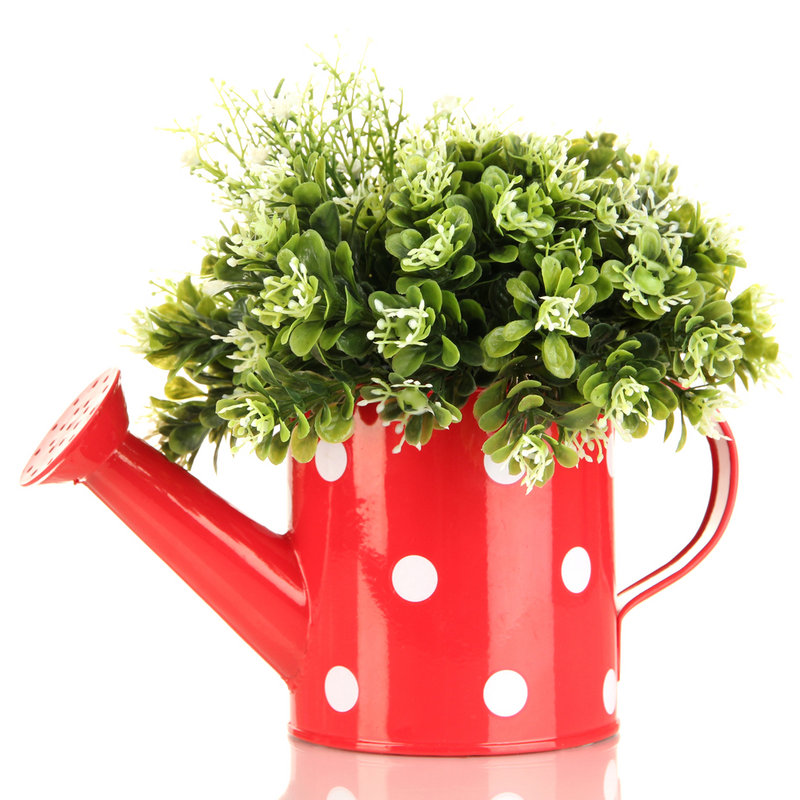When creating a container garden, you have to consider the container and the plants. They have to go together and fit with the home and garden where they will be located.
Dan Heims, president of Terra Nova Nurseries in Oregon, covered the gamut of container and small-space gardening during a lecture at New England Grows in Boston earlier this month. For a person whose business is largely plants, he spent a surprising amount of time discussing the containers.
Two key pieces of information are that trends in containers come and go a lot more quickly than trends in plants, and that just about anything can be a container and doesn’t have to cost a lot.
“Who had even heard about vertical gardening 10 years ago,” Heims said, showing a photograph of 30 heucheras, each with its own square in a structure hanging on a wall. Nurseries across the country are selling many different systems that let people grow plants vertically.
Another trend in the industry is containers made of glass fiber-reinforced concrete.
“These are heavy and attractive,” Heims said. “You can plant it yourself, put it in the elevator, take it up onto your roof, and it won’t blow away.”
These containers can be made to look like they are copper or pewter, which is in right now. Other popular colors are cobalt and celadon. Orange was popular a few years ago, but is now out of favor, according to Heims.
Those kinds of containers would be expensive, but if you use your imagination, you can get unusual containers that are cheap.
“Go to the local Goodwill and get some high-heel shoes — the brighter the better,” he said. “Fill them with semps and sedums.”
Semps is short for Sempervivum, with the common name hens and chicks. They, like sedums, are succulents, and do well in containers because they do not have to be watered often.
Heims’ photo of the high-heel containers showed several of them in a line on a bench near a business entrance. Two or three high-heel shoes with plants in them would not be effective. It takes a lot.
(You would not actually plant these succulents in the shoes. They would be in small pots, and you slide them in and out to get the mix of colors you want. And if a plant dies, it can be easily replaced.)
Another of Heims’ designs had a Maine connection: More semps and sedums planted in a rusty piece of metal found at a junkyard near a midcoast shipyard. You can use anything.
Another idea is to use what Heims called “uncontainers.”
You could hang up a frame, attach a vase to it and put some flowers in the center. Heims showed a picture of a worn-out chair, with flowers winding through it with the help of some metal screening. Almost anything that catches the eye will work.
Heims did spend some time talking about plants.
“I won’t keep a plant that doesn’t pay the rent,” he said. “If it doesn’t work in flowering, form and fall color, why have it in your garden?”
The only reason he keeps peonies in his garden, he said, is because the foliage has great fall color. The flowers themselves, while great, don’t last long enough to merit space in the garden.
Heims repeated an old rule about planting a container: You need a thriller, a spiller and a filler.
The thriller is a striking plant that you put in the center of the pot, providing height, form and often a bit of color. But you can use grasses, larger tropicals like cannas and even a small tree if your container is large enough
The spiller is a plant that trails out of the pot toward the ground, like sweet potato vines, lysimachia, some trailing sedums, ivy and creeping thyme.
The filler is the one that connects the two, and often includes coleus, heucheras, hosta and a variety of flowering plants.
You also have to think of the growing pattern of your mix of plants, so that the container will look as good in late July as it did when you put it out in May. If one plant is a thug growing faster than the other plants in the container, the design will be thrown out of balance unless you spend a lot of time pruning the thug.
Even though gardening season is still a couple of months away, you can start working on your containers — not the plants for the containers, just the containers. As you travel through shops and even your own attic, check to see what would give your garden a striking look this spring.
Heims suggests that you might include perennials in your containers, because many perennials (heucheras are his favorite) have colorful foliage that fills your container until frost — and then you can transfer the perennials into your actual garden for the winter. Heucheras are such a favorite for Heims that he has written a book on them for Timber Press.
It will make the time until the real gardening season seem shorter.
Tom Atwell has been writing the Maine Gardener column since 2004. He is a freelance writer gardening in Cape Elizabeth and can be contacted at 767-2297 or at:
tomatwell@me.com
Send questions/comments to the editors.



Success. Please wait for the page to reload. If the page does not reload within 5 seconds, please refresh the page.
Enter your email and password to access comments.
Hi, to comment on stories you must . This profile is in addition to your subscription and website login.
Already have a commenting profile? .
Invalid username/password.
Please check your email to confirm and complete your registration.
Only subscribers are eligible to post comments. Please subscribe or login first for digital access. Here’s why.
Use the form below to reset your password. When you've submitted your account email, we will send an email with a reset code.